Virtuelle Tour durch die Burgruine Reifenstein im Pölstal in der Steiermark. Geeignet für PC, Tablet und VR-Brille. Für Smartphone aufgrund der Bildschirmgröße nur bedingt empfohlen.
Die virtuelle Tour
Der Rundgang Ruine Reifenstein ist vollumfassend und deckt alle Bereiche – außen und innen, oben und unten ab. Sie ist die “Burg meiner Kindheit” – jeder Winkel war mir bereits seit vielen Jahren vertraut. Auch aus diesem persönlichen Grund ist die Tour in einem Maße ausführlich und detailiert wie keine andere auf dieser Webseite.
Da alle Aufnahmen mittels Drohne getätigt wurden, konnten auch heute völlig unzugängliche oder gefährliche Bereiche dokumentiert werden. Die Technik macht es oft möglich diese in verbruchgefährdeten Bereiche einfliegen zu lassen oder sich von Oben herab zu nähern oder durch das hochgelegene Burgtor zu fliegen.
Empfehlenswert ist es, rechts oben das Infosymbol zu aktivieren. Denn mittlerweise ist die Tour mit vielen Informationen ausgestattet, die ab und an noch ergänzt werden.
Für die Verwendung mit VR-Brille die URL dieser Seite in den Browser der Brille eingeben und in der Tour den Button mit dem Brillensymbol aktivieren.
Die Vermessungskarte in der Tour wurde mit freundlicher Genehmigung entnommen:
Murgg, Werner: Burgruinen der Steiermark. Herausgegeben vom Bundesdenkmalamt, Abteilung für Bodendenkmale, in Zusammenarbeit mit dem Verlag Ferdinand Berger & Söhne Ges.m.b.H., Wien/Horn, 2021

Kurzbeschreibung der Burganlage
Die Ruine ist sehr stark gefährdet und gefährdend, da in unregelmäßigen Abständen immer wieder auch größere Teile zusammenbrechen.
Erbaut ab 1250 (erste Erwähnungen der Burganlage noch früher um 1145, zugleich mit der Kirche im nahegelegen Pöls) und immer wieder umgebaut und ausgebaut wurde die Anlage um 1800 aufgrund der damaligen Dachsteuer und zusätzlich um zu verhindern, dass sich Napoleon mit seinen Truppen sich dort einquartiert, von allen Dächern befreit. Die damals schon baufällige Burg verfiel dann in Folge sehr rasch.
Sichtverbindung besteht zur Burg-Ruine Offenburg auf der anderen Talseite. Knapp aber doch nicht – keine Sichtverbindung besteht zur Ruine Fohnsdorf.
Eine geschichtliche Erwähnung ist es wert, genannt zu werden: einer der Besitzer der Wehranlage war der Bruder des Minnesängers Ulrich von Lichtenstein.
Eine Erzählung im Volksmund und zumindest ein altes Urbar spricht von einem zwei Stock tiefen Keller. Den es im engeren Sinn nicht gegeben hat. Sehr wohl aber hat der Wohn- und Küchentrakt im Osten mehrere Stockwerke, zwei davon sind heute immer noch vorhanden. Das unterste ist direkt an den Felsen gebaut und erweckt damit den Eindruck eines Kellers mit hohem Gewölbe. Blickt man allerdings aus einen der kleinen Fenster, befindet man sich immer noch über dem Boden des umliegenden Waldes. Alle wesentlichen Abschnitte werden in der Tour erklärt.
In ihrer Geometrie kann man diese Anlage wohl als Inbegriff einer klassischen “Ritter-Burg” auffassen. Zumindest stellt man sich diese gerne so vor.
Ein tiefer Burgraben, darüber führten zwei Brücken zu den beiden Toren der zinnenbesetzten Ringmauer, an den Ecken Rundtürme. Ein hochgelegener alter zentraler Teil mit Halb-Rundturm und eckigem Bergfried, ein Innenhof von hohen Gebäuden umgeben und versperrt durch ein weiteres Burgtor, eine gotische Schlosskapelle, ein langer Wehrgang, Pferdestall mit grandiosem Gewölbe, Schießscharten in Schlüsselform, Räume mit Gewölbedecke – alles vorhanden.
Allerdings ist der Begriff “Ritter” nur für das Mittealter fachlich richtig – und die volle Ausbaugröße (vor allem die Ringmauer) wurde erst danach erreicht. Und einige Elemente waren eher Zier als Funktion. Insbesondere so gut wie alle Zinnen. Schießscharten hatten jedoch Funktion. Über diese findet man ein wenig Erklärung dazu im Westturm.
Beschreibung von Walter Brunner 1976
Eine zwar alte aber hervorragende Beschreibung vor allem zur Geschichte der Burg lieferte der Historiker Walter Brunner im Buch “Die Geschichte von Pöls” aus dem Jahr 1976. Erhältlich im Buchantiquariat, z.B. https://www.buchfreund.de oder https://www.zvab.com.
Die Baubeschreibung entstammt aber offesichtlich der früheren von Piper. Der Grundrissplan ist bei beiden nicht vollständig und die Geometrie wird etwas verzerrt wiedergegeben.
Beschreibung von Otto Piper 1905
Otto Piper hat im ersten Standardwerk zur Burgenkunde 1905 die Reifenstein ebenfalls beschrieben in Band 4. Der Auszug kann hier als PDF gelesen und heruntergeladen werden:
Sehenswert
Der große Pferdestall, Küche mit großem Kamin mit Ruß, die Reste der sechs-eckigen gotischen Burgkapelle, das große Rondell, die erhaltenen Räume im halbrunden zentralen Turm und generell die großen Abmessungen der Anlage. Aber: es gilt Betretungsverbot. Und das zu Recht.

Ansichten aus verschiedenen Zeiten
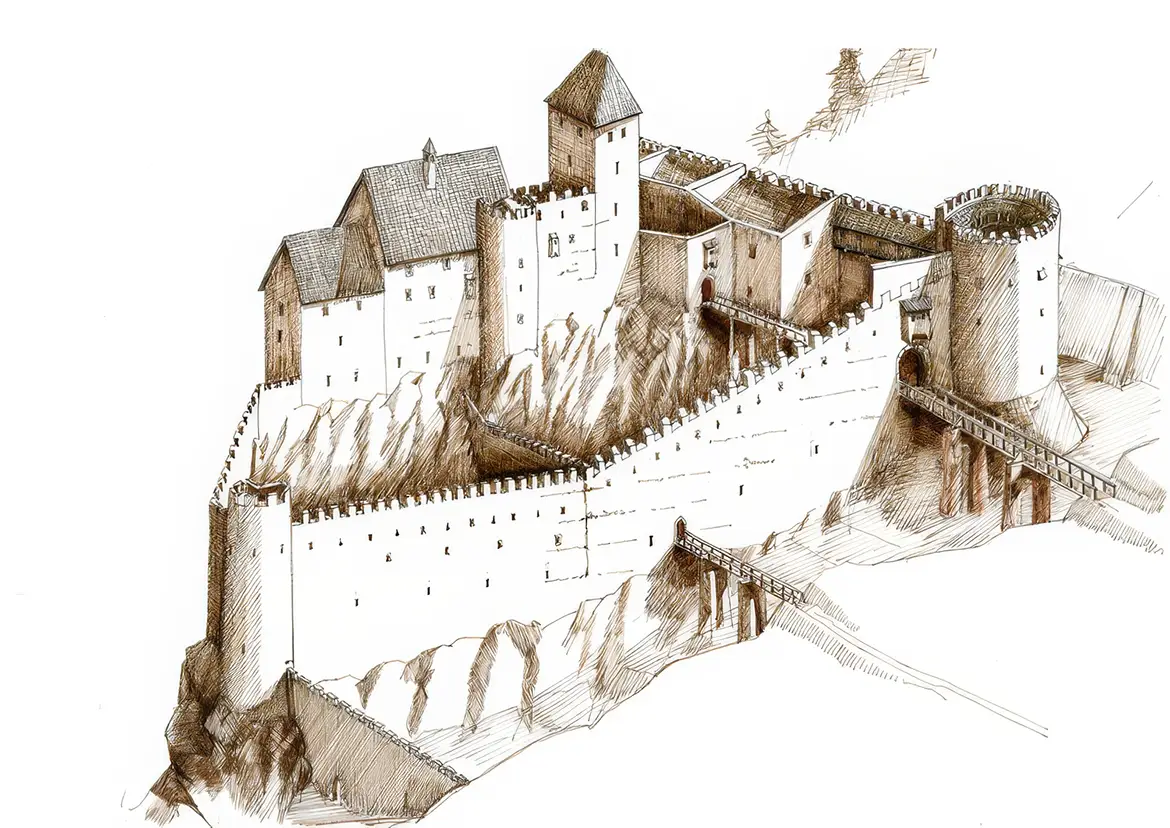
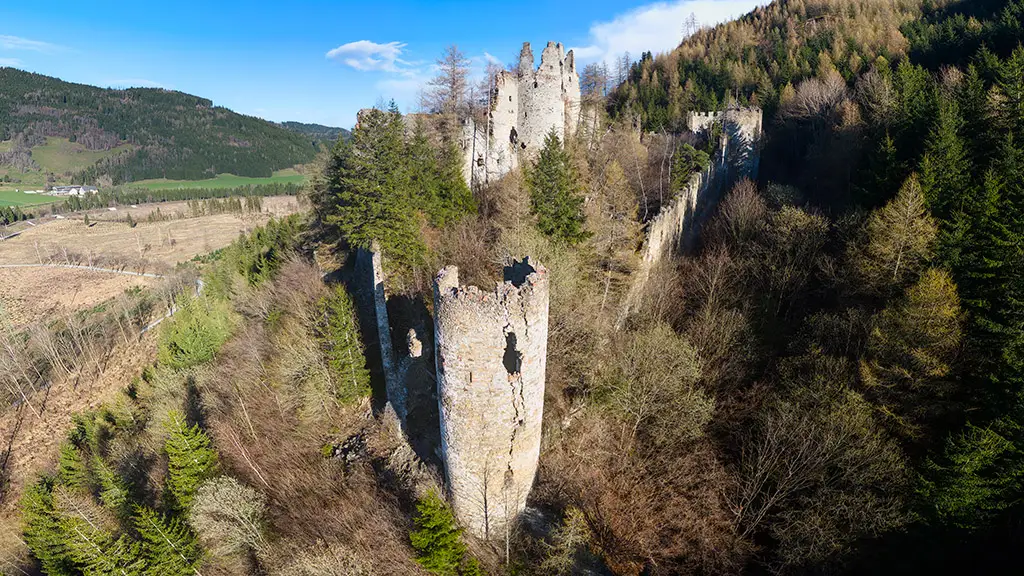
Überflugsvideo nach Osten im Jahr 2024

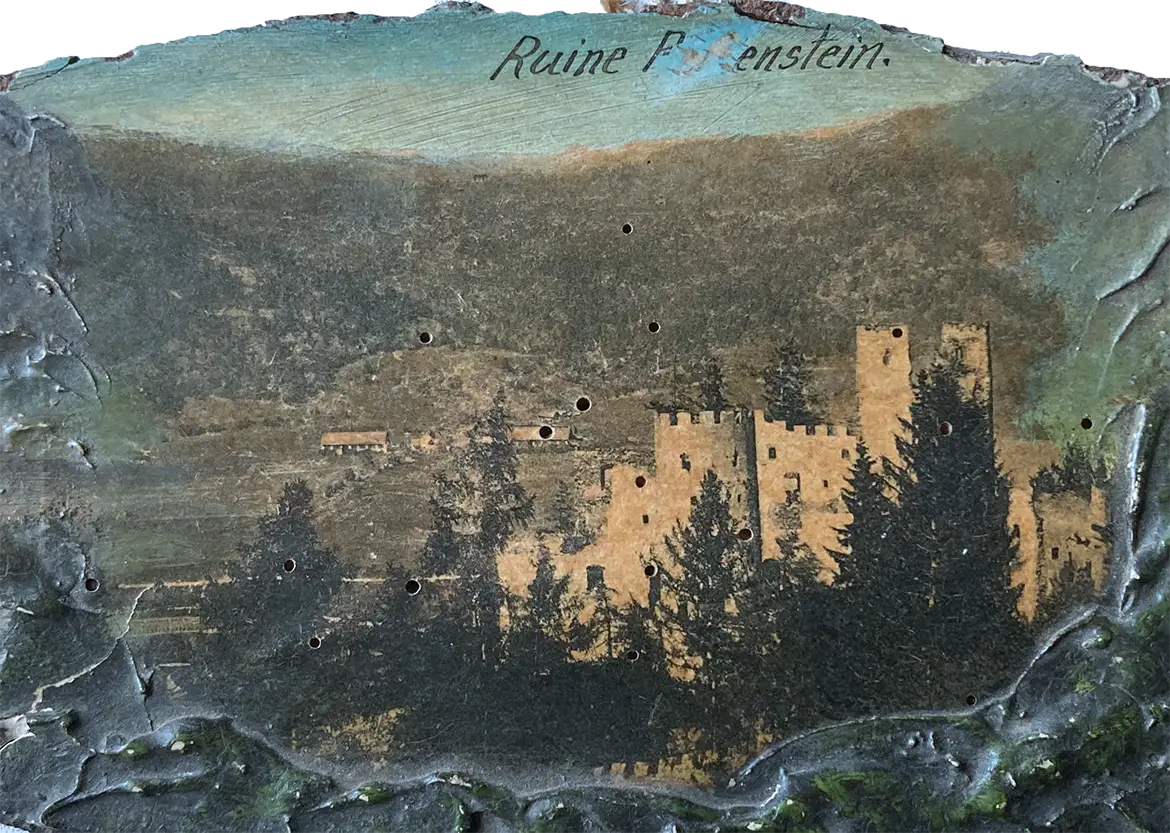

Mir scheint die Abbildung bei Piper sehr abgekupfert von der Lithographie aus 1880. Die Details und Perspektive sind identisch, der Vordergrund reine Phantasie. Hier fehlen die auch auf der Lithographie nicht erkennbaren (durch Gelände verdeckt) Mauern des Burggrabens. Diese müssten hier in dieser Abbildung aber zu sehen sein, so wie der Vordergrund skizziert wurde. Oder anders gesagt: man versuchte zu kaschieren, dass man die Abbildung einfach abzeichnete in Unwissenheit der realen Gegebenheiten vor Ort.
Otto Piper gibt für dieses Bild an: Den Ursprung der in meinem Besitze befindlichen älteren Zeichnung [ ] kann ich nicht mehr angeben.


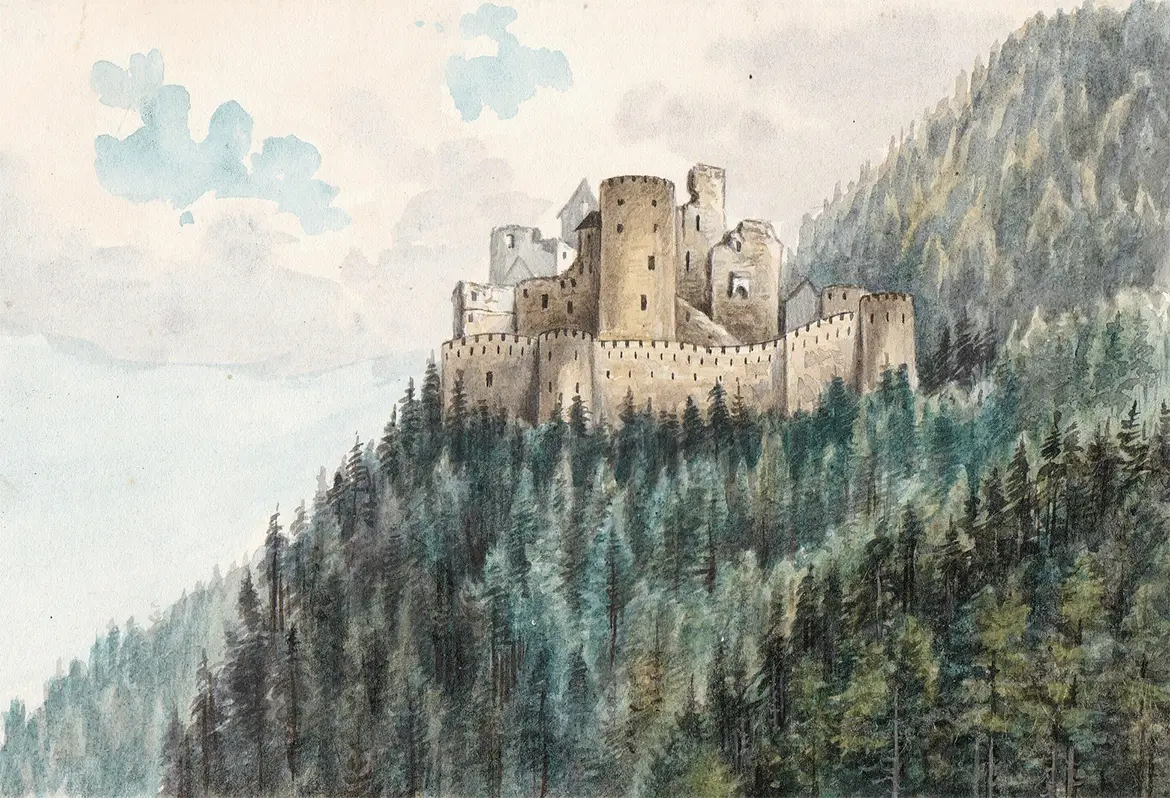
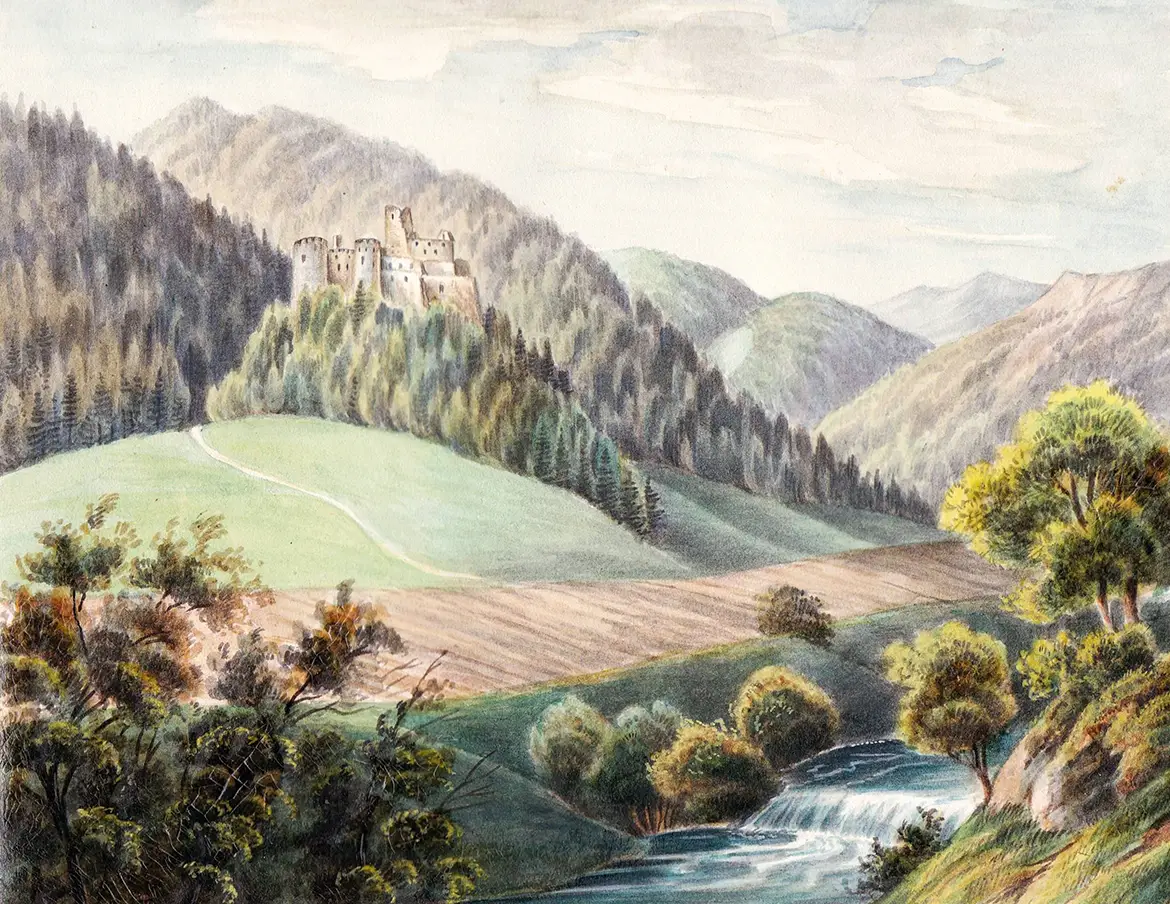
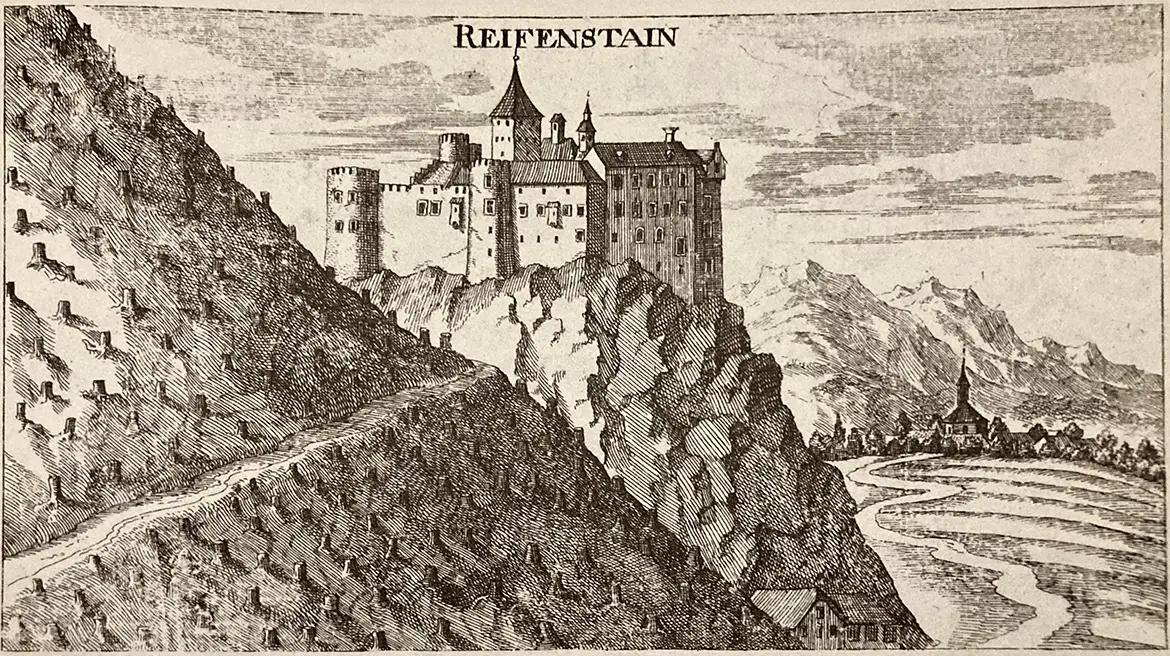
Geografische Lage
Franziszeischer Kataster 1823
Josephinische Landesaufnahme 1785
Informationen im Netz dazu
- Besser wird es nicht – das Feinste vom Feinen: Martin Aigner’s Burgenseite
- Wikipediaartikel: de.wikipedia.org
- Geschichte ohne Bilder in Kürzestform: wehrbauten.at
- Einige Fotos ohne Text – recht brauchbar: ruine.at
- Information in Stichworten: alleburgen.de
- Information zu Geschichte und Bau in knapper Form aber gut: burgen-austria.com

